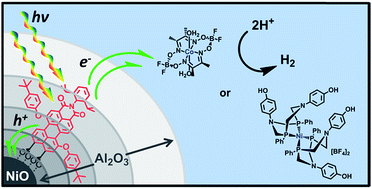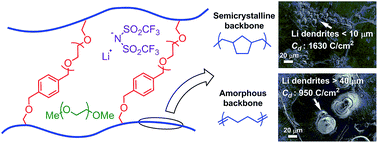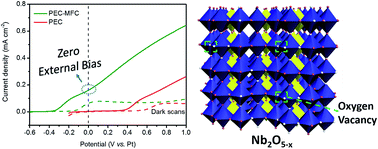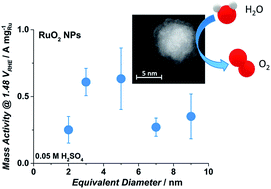Themed collection Global Energy Challenges: Energy Applications

Indolo[3,2-b]indole-based crystalline hole-transporting material for highly efficient perovskite solar cells
A fluorinated indolo[3,2-b]indole (IDID) derivative is prepared as a crystalline hole transporting material for perovskite solar cells. A fluorinated IDID backbone enables a tight molecular stacking by π–π interaction. The device fabricated using IDIDF exhibits a PCE of 19%.
![Graphical abstract: Indolo[3,2-b]indole-based crystalline hole-transporting material for highly efficient perovskite solar cells](/is/Image/Get?imageInfo.ImageType=GA&imageInfo.ImageIdentifier.ManuscriptID=C6SC02832B&imageInfo.ImageIdentifier.Year=2017)
Chem. Sci., 2017,8, 734-741
https://doi.org/10.1039/C6SC02832B
Photodriven hydrogen evolution by molecular catalysts using Al2O3-protected perylene-3,4-dicarboximide on NiO electrodes
Photodriven charge transfer dynamics are described for an atomic layer deposition-stabilized, organic dye-sensitized photocathode architecture that produces hydrogen.

Chem. Sci., 2017,8, 541-549
https://doi.org/10.1039/C6SC02477G
Regioisomer effects of [70]fullerene mono-adduct acceptors in bulk heterojunction polymer solar cells
Regioisomer separations of [70]fullerene mono-adducts for polymer solar cell (PSC) applications were conducted for the first time.
![Graphical abstract: Regioisomer effects of [70]fullerene mono-adduct acceptors in bulk heterojunction polymer solar cells](/is/Image/Get?imageInfo.ImageType=GA&imageInfo.ImageIdentifier.ManuscriptID=C6SC02950G&imageInfo.ImageIdentifier.Year=2017)
Chem. Sci., 2017,8, 181-188
https://doi.org/10.1039/C6SC02950G
Achievement of visible-light-driven Z-scheme overall water splitting using barium-modified Ta3N5 as a H2-evolving photocatalyst
Barium-modified Ta3N5 for the promotion of proton reduction is first employed as a H2-evolving photocatalyst for visible-light-driven Z-scheme overall water splitting.

Chem. Sci., 2017,8, 437-443
https://doi.org/10.1039/C6SC02750D
Enhancement of charge transport properties of small molecule semiconductors by controlling fluorine substitution and effects on photovoltaic properties of organic solar cells and perovskite solar cells
Effects of fluorine substitution of small molecular semiconductor on charge transport and photovoltaic properties are systematically studied.

Chem. Sci., 2016,7, 6649-6661
https://doi.org/10.1039/C6SC02448C
Structure–property study of cross-linked hydrocarbon/poly(ethylene oxide) electrolytes with superior conductivity and dendrite resistance
The influence of macromolecular composition on Li dendrite supression in solid polymer electrolytes was elucidated.

Chem. Sci., 2016,7, 6832-6838
https://doi.org/10.1039/C6SC01813K
Measuring the oxygen content of a single oil droplet
Using toluene droplets as a model for artificial oxygen carriers, the real-time measurement of attomole oxygen contents at the individual droplet level is reported for the first time.

Chem. Sci., 2016,7, 6458-6462
https://doi.org/10.1039/C6SC02357F
Ultrahigh performance supercapacitors utilizing core–shell nanoarchitectures from a metal–organic framework-derived nanoporous carbon and a conducting polymer
Nanoarchitectured nanoporous carbon/conducting polymer core–shell nanocomposites (carbon–PANI) are prepared from metal–organic framework-derived carbon and the controlled polymerization of polyaniline nanorods.

Chem. Sci., 2016,7, 5704-5713
https://doi.org/10.1039/C6SC01429A
Dithieno[3,2-b:2′,3′-d]pyridin-5(4H)-one based D–A type copolymers with wide bandgaps of up to 2.05 eV to achieve solar cell efficiencies of up to 7.33%
A PCE of 7.33% was achieved in a PSC based on a new copolymer, PDTPO-IDT, with bandgaps of up to 2.05 eV.
![Graphical abstract: Dithieno[3,2-b:2′,3′-d]pyridin-5(4H)-one based D–A type copolymers with wide bandgaps of up to 2.05 eV to achieve solar cell efficiencies of up to 7.33%](/is/Image/Get?imageInfo.ImageType=GA&imageInfo.ImageIdentifier.ManuscriptID=C6SC01791F&imageInfo.ImageIdentifier.Year=2016)
Chem. Sci., 2016,7, 6167-6175
https://doi.org/10.1039/C6SC01791F
Understanding the anatase–rutile phase junction in charge separation and transfer in a TiO2 electrode for photoelectrochemical water splitting
The key to phase junctions for efficient charge separation is to consider both the phase alignment and interface structure.

Chem. Sci., 2016,7, 6076-6082
https://doi.org/10.1039/C6SC01611A
Donor–π–donor type hole transporting materials: marked π-bridge effects on optoelectronic properties, solid-state structure, and perovskite solar cell efficiency
Donor–π-bridge–donor type oligomers (D–π–D) have been studied intensively as active materials for organic optoelectronic devices.

Chem. Sci., 2016,7, 6068-6075
https://doi.org/10.1039/C6SC01478J
A “roller-wheel” Pt-containing small molecule that outperforms its polymer analogs in organic solar cells
“Roller-wheel” shaped Pt-containing molecules display enhanced crystallinity and are better performing organic solar cell materials than conventional small molecules and polymers featuring “dumbbell” shaped structures.

Chem. Sci., 2016,7, 5798-5804
https://doi.org/10.1039/C6SC00513F
Effect of multi-armed triphenylamine-based hole transporting materials for high performance perovskite solar cells
The performance of planar perovskite solar cells was enhanced by using hole transporting materials containing triphenylamine groups with a multi-armed structure.

Chem. Sci., 2016,7, 5517-5522
https://doi.org/10.1039/C6SC00876C
Catalytic activities for methanol oxidation on ultrathin CuPt3 wavy nanowires with/without smart polymer
CuPt3 nanowires are synthesized with a thermosensitive amine-terminated poly(N-isopropylacrylamide) polymer, displaying “smart” temperature-controllable electrocatalytic activity towards the methanol oxidation reaction.

Chem. Sci., 2016,7, 5414-5420
https://doi.org/10.1039/C6SC01501H
Effects of heteroatom substitution in spiro-bifluorene hole transport materials
By introducing the heteroatom into the benchmark hole transport material Spiro-MeOTAD, the energy level of hole transport materials can be tuned.

Chem. Sci., 2016,7, 5007-5012
https://doi.org/10.1039/C6SC00973E
Unveiling iodine-based electrolytes chemistry in aqueous dye-sensitized solar cells
The chemistry behind the I−/I3− redox couple is thoroughly investigated in 100% aqueous dye-sensitized solar cells, paving the way to this emerging green PV technology.

Chem. Sci., 2016,7, 4880-4890
https://doi.org/10.1039/C6SC01145D
On the application of the tolerance factor to inorganic and hybrid halide perovskites: a revised system
Can new hybrid perovskites be predicted using the tolerance factor?

Chem. Sci., 2016,7, 4548-4556
https://doi.org/10.1039/C5SC04845A
Insight into the charge transfer in particulate Ta3N5 photoanode with high photoelectrochemical performance
Charge transfer has been demonstrated to have a fundamental role in particulate Ta3N5 electrode for achieving high efficient photoelectrochemical water oxidation.

Chem. Sci., 2016,7, 4391-4399
https://doi.org/10.1039/C6SC00245E
Ring-fusion as a perylenediimide dimer design concept for high-performance non-fullerene organic photovoltaic acceptors
A series of perylenediimide (PDI) dimers are evaluated as acceptors for organic photovoltaic (OPV) cells.

Chem. Sci., 2016,7, 3543-3555
https://doi.org/10.1039/C5SC04956C
Understanding the origin of photoelectrode performance enhancement by probing surface kinetics
Probing the surface kinetics of different hematite electrodes with and without surface passivations.

Chem. Sci., 2016,7, 3347-3354
https://doi.org/10.1039/C5SC04519C
A single cation or anion dendrimer-based liquid electrolyte
The proposed dendrimer based liquid electrolyte is a single-ion conductor where ion transport is altered by the nature of the chemical functionalities leading to large variations in anion diffusion and hence ionic transference number.

Chem. Sci., 2016,7, 3390-3398
https://doi.org/10.1039/C5SC04584C
The importance of nickel oxyhydroxide deprotonation on its activity towards electrochemical water oxidation
The OER activity of NiOOH enhances at pH > 11 due to formation of superoxo-like species on its surface.

Chem. Sci., 2016,7, 2639-2645
https://doi.org/10.1039/C5SC04486C
High conductivity Ag-based metal organic complexes as dopant-free hole-transport materials for perovskite solar cells with high fill factors
Two Ag-based metal organic complexes (HA1 and HA2) are employed as a new class of dopant-free HTMs for the application in PSCs. The cell based on HA1 achieved high PCE of 11.98% under air conditions, which is comparable to the PCE of the cell employing the doped spiro-MeOTAD (12.27%) under the same conditions.

Chem. Sci., 2016,7, 2633-2638
https://doi.org/10.1039/C5SC03569D
Creation of a new type of ion exchange material for rapid, high-capacity, reversible and selective ion exchange without swelling and entrainment
A new model for ion exchange materials has been proposed on the basis of ion exchange sites grafted to a porous organic polymer.

Chem. Sci., 2016,7, 2138-2144
https://doi.org/10.1039/C5SC04507J
Understanding and removing surface states limiting charge transport in TiO2 nanowire arrays for enhanced optoelectronic device performance
An effective wet-chemistry approach is demonstrated to minimize the trap states that limit electron transport in rutile TiO2 nanowire arrays, this leads to an over 20-fold enhancement in the electron diffusion coefficient.

Chem. Sci., 2016,7, 1910-1913
https://doi.org/10.1039/C5SC04076K
Spatial separation of oxidation and reduction co-catalysts for efficient charge separation: Pt@TiO2@MnOx hollow spheres for photocatalytic reactions
The design and synthesis of fine Pt@TiO2@MnOx hollow spheres is described. Pt and MnOx are spatially separated by TiO2 shells. The catalyst exhibits high efficiency of charge-separation and surface-reaction.

Chem. Sci., 2016,7, 890-895
https://doi.org/10.1039/C5SC04163E
Ultra-large optical modulation of electrochromic porous WO3 film and the local monitoring of redox activity
Porous WO3 films with ultra-high transmittance modulation were successfully fabricated on different substrates by a novel electrochemical deposited method.

Chem. Sci., 2016,7, 1373-1382
https://doi.org/10.1039/C5SC03727A
Solid state lithiation–delithiation of sulphur in sub-nano confinement: a new concept for designing lithium–sulphur batteries
Sub-nano confinement of sulphur enables a solid-state lithium–sulfur electrochemical reaction mechanism in liquid electrolytes.

Chem. Sci., 2016,7, 1224-1232
https://doi.org/10.1039/C5SC03419A
Ruthenium(II)-polypyridyl zirconium(IV) metal–organic frameworks as a new class of sensitized solar cells
Ruthenium(II) polypyridyl-doped metal–organic framework sensitized films on TiO2 for photovoltaics reveal that the preparative method of dye doping/incorporation into the MOF is integral to the total solar cell efficiency.

Chem. Sci., 2016,7, 719-727
https://doi.org/10.1039/C5SC01565K
Increased upconversion performance for thin film solar cells: a trimolecular composition
A dual-emitter upconvertor is applied to thin-film solar cells for the first time, generating record figures of merit.

Chem. Sci., 2016,7, 559-568
https://doi.org/10.1039/C5SC03215F
Ring-chain synergy in ionic liquid electrolytes for lithium batteries
The ionic liquid-based electrolyte containing ring-like Pyr1,2O1TFSI and chain-like DMS exhibits good overall performance in lithium-ion batteries.

Chem. Sci., 2015,6, 7274-7283
https://doi.org/10.1039/C5SC02761F
Solar-microbial hybrid device based on oxygen-deficient niobium pentoxide anodes for sustainable hydrogen production
A new solar-microbial hybrid device based on oxygen-deficient Nb2O5 anodes for sustainable hydrogen generation without external bias was demonstrated.

Chem. Sci., 2015,6, 6799-6805
https://doi.org/10.1039/C5SC03249K
Fast electrosynthesis of Fe-containing layered double hydroxide arrays toward highly efficient electrocatalytic oxidation reactions
Fast electrosynthesis of Fe-containing layered double hydroxide arrays and their highly-efficient electrocatalytic performance toward small molecule oxidation reactions.

Chem. Sci., 2015,6, 6624-6631
https://doi.org/10.1039/C5SC02417J
Thermally-responsive, nonflammable phosphonium ionic liquid electrolytes for lithium metal batteries: operating at 100 degrees celsius
Lithium metal battery cycling at 100 °C is enabled by thermally-responsive, nonflammable phosphonium ionic liquid electrolytes.

Chem. Sci., 2015,6, 6601-6606
https://doi.org/10.1039/C5SC01518A
In situ investigation of dissociation and migration phenomena at the Pt/electrolyte interface of an electrochemical cell
Using near ambient pressure X-ray photoelectron spectroscopy we probe in situ the double layer at the Pt/liquid electrolyte interface.

Chem. Sci., 2015,6, 5635-5642
https://doi.org/10.1039/C5SC01421B
Tetraarylborate polymer networks as single-ion conducting solid electrolytes
A new family of solid polymer electrolytes based upon anionic tetrakis(phenyl)borate tetrahedral nodes and linear bis-alkyne linkers is reported.

Chem. Sci., 2015,6, 5499-5505
https://doi.org/10.1039/C5SC02052B
Vibrational properties and bonding nature of Sb2Se3 and their implications for chalcogenide materials
There is more to chemical bonding in chalcogenides than the shortest, strongest bonds, as revealed by microscopic quantum-chemical descriptors.

Chem. Sci., 2015,6, 5255-5262
https://doi.org/10.1039/C5SC00825E
Wide bandgap OPV polymers based on pyridinonedithiophene unit with efficiency >5%
We report the properties of a new series of wide band gap photovoltaic polymers based on the N-alkyl 2-pyridone dithiophene (PDT) unit.

Chem. Sci., 2015,6, 4860-4866
https://doi.org/10.1039/C5SC01427A
Doping-induced memory effect in Li-ion batteries: the case of Al-doped Li4Ti5O12
A memory effect in Li-ion batteries can be induced and tailored by element doping, such as Al-doping in spinel Li4Ti5O12.

Chem. Sci., 2015,6, 4066-4070
https://doi.org/10.1039/C5SC00429B
Oxide-supported Ir nanodendrites with high activity and durability for the oxygen evolution reaction in acid PEM water electrolyzers
Ir nanodendrites (Ir-ND) supported on antimony doped tin oxide (ATO) show enhanced catalytic activity and stability for oxygen evolution reaction (OER) in polymer electrolyte membrane (PEM) water electrolysis.

Chem. Sci., 2015,6, 3321-3328
https://doi.org/10.1039/C5SC00518C
Single graphene nanoplatelets: capacitance, potential of zero charge and diffusion coefficient
A nano-impact chronoamperometric experiment is presented here as a powerful technique for simultaneously probing important physical properties of graphene nanomaterials.

Chem. Sci., 2015,6, 2869-2876
https://doi.org/10.1039/C5SC00623F
Durable hydrogen evolution from water driven by sunlight using (Ag,Cu)GaSe2 photocathodes modified with CdS and CuGa3Se5
The multilayer structure enhances the hydrogen evolution from water under simulated sunlight.

Chem. Sci., 2015,6, 894-901
https://doi.org/10.1039/C4SC02346C
Reversible photo-induced trap formation in mixed-halide hybrid perovskites for photovoltaics
A reversible photo-induced instability has been found in mixed-halide photovoltaic perovskites that limits the open circuit voltage in solar cells.

Chem. Sci., 2015,6, 613-617
https://doi.org/10.1039/C4SC03141E
Oxygen evolution on well-characterized mass-selected Ru and RuO2 nanoparticles
Well-defined mass-selected Ru and RuO2 nanoparticles exhibit an order of magnitude improvement in the oxygen evolution activity, relative to the state-of-the-art, with a maximum at around 3–5 nm.

Chem. Sci., 2015,6, 190-196
https://doi.org/10.1039/C4SC02685C
About this collection
We are delighted to present an online collection showcasing recently published articles in the field of energy. To address major issues facing our planet, researchers all over the world have increasingly focused their efforts on finding solutions to these energy challenges. These articles highlight some of the excellent work that tackles important global challenges related to energy. We hope you enjoy reading this collection!